Almonds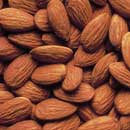
|
Almonds are a nutrition packed nut. Like others nuts, it is high in fibre, monounsaturated fats and antioxidants like vitamin E. Almonds contain high amounts of magnesium important for circulation of oxygen in the blood which is crucial to optimum cardiovascular performance. They are also high in potassium which is important for heart function to increase endurance, as well as for muscle contraction, to promote strength and assist in a speedy recovery. |
| Apples

|
Apples are a delicious fruit is filled with vitamins A and C, potassium and copper. Vitamin A and C are anti-oxidants which reduce the incidence of free radical damage, heart disease and tumorous cancer growths. Apples also contain both soluble and insoluble fibre, which promote heart and digestive health. The skin of an apple also contains a special flavonoid called quercetin, which reduces the risk of cancer. |
| Artichokes

|
Artichokes are a disease fighting food, combating diabetes, heart disease and cancer all at once. It is the main carbohydrate source inulin that is known to help stabilize blood sugar levels which is important for the prevention of diabetes. Artichokes also promote bile secretion. Bile binds cholesterol, decreasing the formation of arterial plaque, in turn decreasing your risk of heart disease and stroke. The heart of an artichoke also provides a group of flavonoids called silymarin which are potent anti-inflammatories that help to ward off cancer. |
| Asparagus

|
Asparagus is a great vegetable for people who are physically active. It supplies almost 66% of the daily recommended intake of folate, which is crucial for red blood cell synthesis and preventing iron deficiency anemia. In addition, it is high in vitamin K content which is important for chelating calcium to help build strong bones and prevent osteoporosis. Asparagus also contains a special kind of carbohydrate called inulin that promotes the formation of health-friendly bacteria in our large intestine. |
| Bananas

|
Bananas are an excellent source of energizing carbohydrate and potassium. This makes bananas a great post-exercise food choice for replenishing muscle and liver glycogen which can aid in the prevention of muscle cramps. They also provide vitamin B6 and other phytochemicals including Vitamin C and folate that help fight cancer and heart disease. Bananas contain a unique form of fiber to help provide good bacteria in your gut and colon.
|
| Beets

|
Beets- are a great disease fighter. Their red betacyanin pigment is known to be a potent cancer fighter. They also contain the nutrient betaine which works with folate to lower inflammatory compounds known to damage your arteries and increase your risk for heart disease. Red beets are also a great source of salicylic acid, a close relative of aspirin. Beet greens are a great treat for vegetarians as they have a high iron and calcium content rarely found in vegetables, yet so crucial to preventing anemia and osteoporosis. They are also loaded with vitamin C, fibre, potassium and magnesium, all important to maintain good health. |
| Bell Peppers
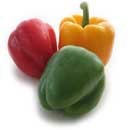
|
Bell peppers are one of the top 10 foods for supplying beta-carotene and vitamin C, making them an antioxidant powerhouse. Both of these antioxidants aid in post workout muscle recovery. Red and yellow peppers have at least twice as much vitamin C and nine times the concentration of beta carotene than a green pepper. These antioxidant properties help to lower cholesterol build up on the arteries and fight the formation of nitrosamines, a cancer causing agent. These peppers also supply potassium and folate which protects the heart to keep it in tip top condition. |
| Berries

|
Berries are nutritional powerhouses. Blueberries rank at the top in antioxidant activity compared with all other fruits and veggies. The blue color (anythocyanin) is the antioxidant responsible for helping reduce build up of bad cholesterol, decreasing the risk for heart disease, stroke and certain cancers. Strawberries and raspberries contain ellagic acid, which is responsible for improving heart health, blood pressure and preventing certain types of cancers. |
| Bok Choy
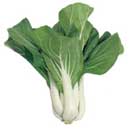
|
Bok Choy is a nutrition powerhouse with numerous disease fighting phytochemicals. For people who do not eat dairy products, these leafy greens which are high in calcium and vitamin K content, help build strong bones, reducing the risk of osteoporosis. Additionally, Bok Choy is a great source of iron necessary for muscle oxygenation and prevention of anemia. This vegetable is also known for a phytochemical that produces an antioxidant which can help reduce the stress load of intense training. |
| Broccoli

|
Broccoli is famous for its cancer fighting properties. Broccoli is also a heart-friendly food. The beta-carotene, potassium and folate all promote a healthy heart function and are known to reduce the risk of heart disease. A special compound luetin is especially potent in reducing heart disease by eating away at plaque build up on artery walls. Lastly, Broccoli is another bone building vegetable containing over 100% of your recommended daily intake of vitamin K and 200% of your recommended daily intake of vitamin C. |
| Carrots

|
One medium carrot contains your daily requirements for a type of Vitamin A called beta-carotene. Vitamin A has numerous health benefits including its powerful antioxidants which boost the immune system, helping to ward off infections. Because of its immune enhancing effects, carrots have been shown to be very powerful disease fighters. A specific compound found in carrots called teroedniod has both anti-bacterial and anti-tumour properties. The caroteniods in the carrots have also been proven to dramatically lower blood pressure and cholesterol. |
| Cauliflower

|
Many assume that all white vegetables have little nutritional value. However, cauliflower is a disease fighting powerhouse. Cauliflower is packed with vitamin C, folate, potassium and fibre which team up to prevent heart disease by lowering blood pressure and bad ‘LDL’ cholesterol. Cauliflower also provides properties that battle cancer by reducing tumour growth. |
| Citrus Fruits
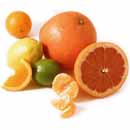
|
Oranges, limes, lemons, grapefruit, limes and clementine’sare not only good sources of Vitamin C but they contain many other nutrients such as fiber, potassium, folate, Vitamin B-6, magnesium, thiamine, niacin and other phytonutrients. These naturally occurring compounds have been found to protect against many diseases. Consuming Vitamin C as part of diet rich in fruits and vegetables is associated with lower rates of disease. |
| Eggs

|
Eggs make a great pre and post exercise meal. Each egg contains about 7 grams of complete and readily absorbable protein, perfect for aerobic metabolism and assisting in speedy recoveries. Eggs also have a high amount of easily absorbed iron which helps prevent iron deficiency anemia and oxygenate the muscles during workouts. Eggs also pack a potent anti-oxidant mix that aid in muscle recovery. Additionally, eggs contain vitamin D which promotes bone health as well as vitamin B-12 which assists iron in maintaining blood cell health. |
| Fatty Fish
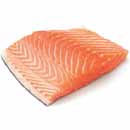
|
Fatty fish such as mackerel, herring and salmon are excellent sources of high quality protein, iron and vitamin B12. All of which are important for maintaining muscle mass, cardiovascular health and ensuring you perform at your best. However, it is the types of fat called omega-3 fatty acids in this type of fish that sets them above other high quality meat and alternative protein sources. Omega-3’s have great anti-inflammatory properties, protecting the heart and protecting against inflammatory conditions such as arthritis and psoriasis. Specific to the heart, omega-3 has proven to keep other bad fats from building up and injuring the arterial wall, reducing the risk of heart disease. Additionally, this type of fish supplies a hearty dose of vitamin D which enables your body to absorb calcium, helping protect bone density and preventing osteoporosis. |
| Flaxseed

|
Flaxseed offers a vegetarian alternative of omega 3 fatty acids. Flaxseed has been shown in many studies to offer heart-healthy benefits by lowering total cholesterol and Low-density Lipoprotein (LDL) cholesterol (the bad cholesterol) levels. Flaxseed also helps lower triglycerides and blood pressure, reducing the risk of a heart attack. Flaxseed oil pills provide a concentrated source of alpha-linolenic acids. However, it does not contain other beneficial ingredients such as fiber and lignin found in the actual flaxseed. Lignin is a type of antioxidant phytoestrogen proving to protect against cancer. |
| Garlic

|
Garlic is packed with powerful phytochemicals which have been linked to lowering blood cholesterol, reducing the risk of stomach and colon cancers. The phytochemicals are released when the garlic is crushed, chopped to cooked. Studies have shown that eating 2-3 cloves/day can significantly lower risk of colon cancer and provide heart health benefits. |
| Herbs

|
Many herbs contain numerous phytochemicals including antioxidants to support health and fight diseases like cancer and heart disease. Rosemary leaves contains carnosic acid which has long-lasting abilities to quench free radicals, fighting against cancer and heart disease. Thyme also contains a number of familiar cancer-fighting polyphenols. Basil supplies the cancer fighting terpenoid geraniol and heart healthy quercetin. Herbs can aid in replacing the flavour additives in high fat and sugar sauces. Therefore, by switching to seasoning foods with herbs you are further reducing your risk for diseases such as cancer and heart disease as well as promoting weight loss by the removal of additional empty calories. |
| Nuts

|
Nuts are not only one of the best sources of plant protein, but they are also rich in magnesium, niacin, copper and manganese, vitamin E and other antioxidants. For active individuals, the magnesium content helps to relax blood flow which reduces cardiovascular stress that occurs after strenuous workouts aiding in the recovery process. Additionally, these antioxidants also aid in recovery of muscles through the reduction of oxidative damage. Nuts are also high in plant sterols, fibers and “good fats” that are shown to protect against chronic diseases. A study revealed that people who eat nuts 5 or more times per week reduce their risk of developing heart disease and diabetes by more than 20%. Many people may tend to avoid nuts because they are calorically dense. However, incorporating 1/4 cup of nuts along with a carbohydrate source, such as dry cereal and dried fruit mixtures, will actually help to manage weight by keeping you fuller longer. A perfect post workout snack. |
| Oatmeal

|
Oatmeal is an excellent pre-activity food choice as it is stacked with complex carbohydrates, considered the most vital source of glycogen to stock up on before you exercise. It is also high in fiber which helps you feel satisfied longer after meals and maintain your energy for a long period of time during workouts. Oats also have many disease fighting compounds such as tocotrienols, which have heart healthy benefits similar to those of vitamin E. They also supply B vitamins such as folate which promotes a healthy heart, along with phosphorous and magnesium which contributes to healthy strong bones. |
| Olive Oil
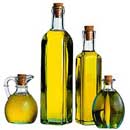
|
Olive oil is a great choice when preparing food because of its high mono-unsaturated fat content. This healthy fat helps raise ‘healthy’ HDL cholesterol fighting off heart disease. Additionally, this oil contains an abundance of beneficial plant compounds such as flavonoids, phenols and lignin’s, which act as potent antioxidants in the body. They also fight heart disease by reducing the build-up of plaque on artery walls. These potent phytochemicals also inhibit the development and spread of cancerous cells, especially for breast and colon cancer. |
| Peanut Butter
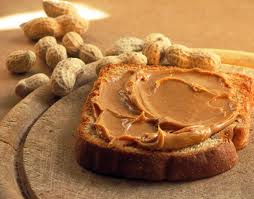
|
Peanut Butter is a protein powerhouse and it provides a good dose of carbohydrates for energy. Although peanut butter is high in fat, most of the fat is of the monounsaturated variety which helps lower bad (LDL) cholesterol. If possible, choose natural peanut butter made with no added sugar. |
| Raisins
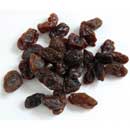
|
Raisins are a great snack for those individuals needing more calorically dense nutrition packed foods to fuel their strenuous workouts. Grapes contain a significant amount of antioxidant power aiding in muscle recovery. These dried jewels also contain a hefty dose of B-vitamins needed to keep the heart healthy and iron needed for blood oxygenation to deliver fuel to keep your muscles going. Raisins also contain cholesterol lowering quercetin, artery expanding flavonoids and tumour-fighting tannins. During the drying process, raisins also create a fibrous carbohydrate; inulin, which ferments in the gut creating multiple healthy bacteria which help prevent and manage intestinal diseases. |
| Spinach

|
Pound for pound, spinach provides more nutrients than any other food. The nutrients in this leafy green include vitamin K, vitamin A, manganese, folate, magnesium, iron, vitamin C, vitamin B2, calcium, potassium, and vitamin B6. When it comes to cardiovascular conditioning its high magnesium and iron content increase circulation of oxygen in the blood, which is crucial for optimal performance. Spinach also boasts antioxidants vitamin A and C which can counter balance the oxidative stress of a strenuous workout. Tip: To unlock the iron content of spinach bound, cook your spinach on a medium to high heat to obtain all the nutritional benefits. |
| Sweet Potatoes
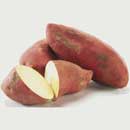
|
Sweet potatoes are an excellent source of iron, which is conducive to oxygenation of the muscles to fuel your workouts. Sweet potatoes are also a source of vitamin C and E and beta-carotene which both have antioxidant properties that assist in muscle recovery. On the disease fighting front, the folate, iron, copper, calcium and fibre in this vegetable helps to lower cholesterol, blood pressure and homocysteine levels. These nutrients also boost the immune system, fight cancer, support strong bones and combat intestinal disease. |
| Tea

|
Tea has long been considered a super drink due to its polyphenol content, a known anti-oxidant. It is these polyphenols that researchers have shown to reduce the risk of cancer, heart disease and stroke. A Japanese study has shown these compounds reduce the oxidation of the bad LDL cholesterol, which decreases plaque build up on artery walls. Tea has also been found to reduce tumour growth in multiple cancers such as gastric, skin and ovarian. As it turns out, to get tea’s natural health benefits, the type of tea does not matter as long as it’s not decaffeinated, as polyphenols may be removed during the process. More importantly, its what you put into your tea. Adding high fat cream or simple sugars reduces the nutritional value and adds empty calories. It should be noted that tea does contain 40mg of caffeine per cup, which can be harmful to the body if consumed in quantities over the daily limit of 400mg. |
| Tomatoes

|
Tomatoes have long been known as a super food and much of this is chalked up to its high lycopene (red pigment) content. Research has shown this compound is a powerful antioxidant which protects against prostate, colorectal, breast, lung, endometrial, pancreatic, bladder, cervical and skin cancers. Tomatoes are also rich sources of vitamin C, vitamin A, B vitamins including niacin and riboflavin, magnesium, phosphorous, and calcium. The vitamin B6, niacin, potassium, and folate found in abundance in tomatoes are potent protectors against heart disease. Niacin also lowers cholesterol levels and potassium has been shown to lower high blood pressure which reduces the risk of heart disease. |
| Watermelon

|
Watermelon is yet another fruit packed with potent antioxidant power due to its red pigment lycopene. The antioxidant power in this pigment, along with this fruit’s high concentration of vitamin and beta carotene is sure to reduce oxidative stress from intense workouts, helping aid in muscle recovery. For general health , lycopene is known for protecting against heart disease and fighting various cancers. Watermelon also stimulates the production of glutathione, the body’s own protective anti-oxidant which boosts the immune system to fight numerous chronic diseases by reducing inflammation and detoxifying carcinogens. |
| Whole Grains
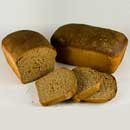
|
Numerous studies have shown that simply switching from refined grain products to whole grain products reduces your risk for heart disease, diabetes, cancer and stroke. By including food products that have the whole grain intact, you are opening up a storage sight of fibre, selenium, magnesium, thiamine, phosphorous, zinc and vitamin E. It is the whole grains phytochemicals including phenolic acids, phytic acid and lignins that combat to fight against cancer and heart disease. Fibre-rich whole grain wheat and its many nutrients further reduce the risk of heart disease and stroke by lowering the bad LDL cholesterol and maintaining healthy blood pressure levels. Lastly, whole wheat provides slow-releasing carbohydrates that stabilize blood sugars to prevent and manage diabetes. |
| Yogurt

|
Yogurt is a fantastic post workout food. Containing 8 g of protein in a 1 cup serving, eating yogurt after your workout will help repair muscle breakdown and promote tissue repair. But the health benefits go way beyond that. The active cultures in yogurt help maintain the good gut bacteria in your intestinal tract. Enjoy yogurt as substitute for many high fat foods like mayonnaise, sour cream, oils in baking. Add it to smoothies, salad dressings, dips or as a dessert topping. |






























